This post may contain affiliate links. Please read my disclosure policy.
Ever wondered how long leftovers are good for? And if you really need to eat them within 4 days? We’re talking all about leftovers including everything from basic food safety, common-sense rules, and how to make the most out of your leftovers! Whether you’re an expert or a newbie, there’s more to eating leftovers than you might realize. We’re sharing everything you need to learn about them here!
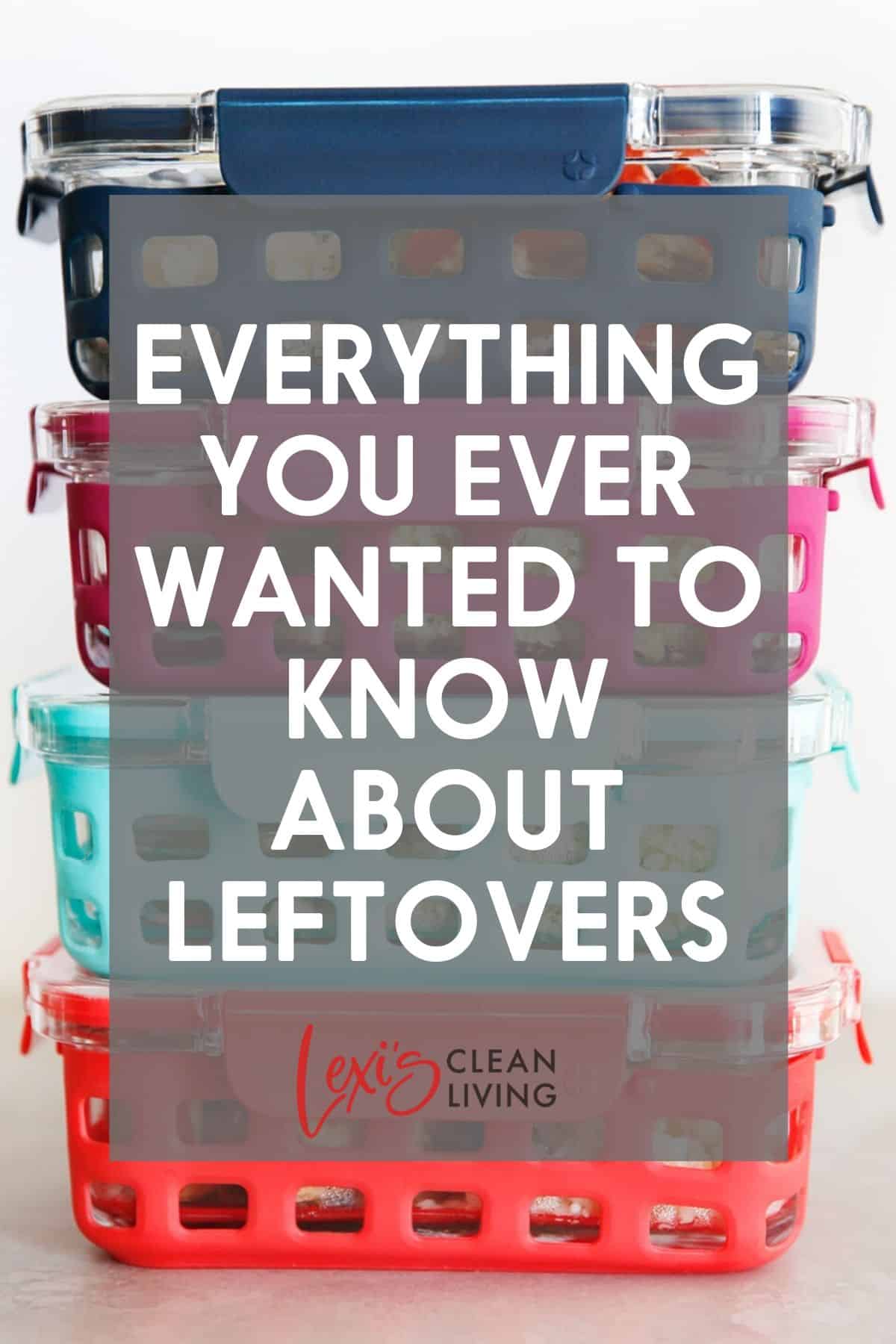 Leftover Food Guide: How Long are Leftovers Good For?
Leftover Food Guide: How Long are Leftovers Good For?
People can be a little iffy about leftovers and… to be honest, I get it. It can be hard to get excited about the idea of heating up a meal from yesterday or the day before and enjoying it all over again.
But let’s get real: there are actually a lot of benefits to eating leftovers. By accounting for them in your family’s meal plan for the week, you can cut down on the time you’ll spend in the kitchen preparing food. You can also get more mileage out of healthy meals that you feel good serving your loved ones so that you don’t find yourself defaulting to less-than-healthy quick fixes. With leftovers, your groceries can also work a little harder and more efficiently so you’ll have less waste.
I think it’s also worth noting that taking advantage of leftovers is especially advantageous during this period of pandemic and quarantine. We’re all looking for ways to cut down on the amount of time we’re spending in crowded places like the grocery store, so why not plan for leftovers ahead of time, buy only what you need at the supermarket, and skip additional trips? Plus, with the extra time that many of us are spending at home these days, we could all use some hacks to get more out of our time in the kitchen. Leftovers are a fantastic solution.
What Makes Good Leftovers?
Sadly, not all leftovers are created equal. Some foods are actually pretty disappointing when stored and eaten again, which is probably why leftovers as a whole get a bad rep! Let’s break it down into two categories…
Intentional Leftovers vs. Unintentional Leftovers
Intentional leftovers are a great way to meal prep without actually having to carve out any extra time in your day. You will have already intentionally cooked extra of something! It’s as simple as doubling or tripling a recipe so you have extras to work with later on in the week (or for the freezer). Often, intentional leftovers are meant to be repurposed into something new from the start — or they can simply be leftovers that just need to be reheated.
Intentional Leftovers
Here are some foods that are great for repurposing as intentional leftovers:
Rice
Making a big batch of rice at the start of the week means you might be serving it as a side one night, then turning it into a totally different dinner another night, such as Frozen Veggie Fried Rice or Stuffed Pepper Soup. You can even make it into breakfast another morning! Try Breakfast Fried Rice if that sounds interesting.
Braised Meat
Making extra of any braised or cooked meat, such as Beef Barbacoa Recipe, Pork Carnitas, or Shredded Chicken is the perfect way to have a head start on a meal for another night. The options are endless for what you can do to turn leftover meat into a new meal, but here are some ideas:
- Add it to soup
- Tacos!
- Add it to pasta
- Make chicken salad
- Add it to fried rice
- Make enchiladas
- Add it to salad
- Make a sandwich
- Add it to nachos
Roasted Veggies
Having roasted veggies on hand is a great way to bulk up new meals. If you have them on hand, you are also more likely to eat them! Also, cooked potatoes (like baked potatoes) are a great way to make new meals.
Unintentional Leftovers
And then there are unintentional leftovers. Unintentional leftovers are, well, exactly what they sound like: food that’s left over from a meal. Wondering whether something can be saved? It’s really a matter of personal choice. Nearly anything can be leftovers, but some foods reheat better than others.
Here are some dishes that make particularly good leftovers…
- Meatloaf (like my gluten-free version!)
- Pulled pork
- Soup (one of my favorite leftover options — and I have so many healthy soup recipes!)
- Stew (like beef or short rib)
- Baked pasta dishes (gluten-free lasagna is always a good idea)
- Meat sauce
- Chili (like my turkey chili or sweet potato chili!)
- Quiche (this recipe with spring veggies is one of my faves)
- Curry (like my shrimp curry or chickpea cauliflower curry)
- Casseroles (try my Healthy Broccoli Quinoa Casserole!)
- Meatballs (so many meatball recipes)
Other foods, however, don’t fare so well as leftovers. Dishes and ingredients with a higher water content will get soft and mushy within a few hours and definitely won’t be so delicious on the second round. Some examples:
- Zucchini noodles are a great example of this!
- Anything with mushrooms, which don’t fare well with time.
- A dish with ingredients that won’t last, like avocado, is another example.
If you want to get serious about incorporating leftovers into your family’s rotation, make sure you’re planning out leftovers for dishes you think are actually going to be yummy when eaten a second or third time. You definitely want to experiment a bit to see what your family likes as leftovers.
Food Safety Guidelines
Since leftovers often involve reheating food that’s been chilled in the refrigerator or freezer, it’s especially important to observe food safety guidelines when indulging in them. When handled improperly, changes in the temperature of food can promote excess bacterial growth, potentially causing sickness. Food should be cooked to a safe temperature to begin with and refrigerated promptly to prevent foodborne illness.
From there, leftovers need to be handled correctly. Here are some key rules of thumb to keep in mind, according to the USDA:
- Don’t leave food at room temperature for too long. Keeping food at the correct temperature is very important, since it slows the growth of bacteria. The danger zone for bacterial growth for food is the range of temperatures between 40°F and 140°F, which can allow bacteria growth to double in as little as 20 minutes, according to the USDA. Perishable foods should not be left at room temperature for more than two hours (or one hour, if the temperature is 90ºF or higher).
- Don’t cover your leftovers when they’re still hot. When covered, hot foods don’t have the chance to cool down as quickly, and that will make them hang out in that “danger zone” for a longer period of time. Wait to cover hot foods until they’ve already cooled a bit. For a good rule of thumb, observe “the steam rule.” If you’ve covered your food and the container starts to steam inside, that means it is still too hot to be covered.
- Cool foods quickly before getting them in the refrigerator. You can speed up the natural cooling process by storing your leftovers in shallow containers (more on containers below!) or cutting them into smaller pieces. The less time you allow a dish to sit on the counter cooling, the less time it has to grow bacteria. Foods should be just barely warm before being moved to the fridge.
- Wrap your leftovers well. Leftovers are less likely to attract bacteria when they’re airtight in the refrigerator! Go for airtight packaging or sealed containers whenever possible.
How Long Are Leftovers Good For?
Once you’ve put your leftovers in the refrigerator, you need to be mindful about how long they stay there before you eat them. As soon as food starts to cool after it has been cooked, bacteria naturally starts to grow. The key is to make sure that the bacteria doesn’t overgrow, which makes the food unsafe to eat. Time determines how much bacteria can grow. Basically, the longer the food is around, the more likely it is to be unsafe to eat. There are more official safety rules stated about this, but there are common sense ones, as well.
The thing that seems most confusing for people about leftovers is how long they should be kept. Let’s look at it from two angles — the recommended guidelines from the USDA and common sense guidelines:
Recommended Guidelines
According to the USDA, leftovers can generally be kept in the refrigerator for up to four days or in the freezer for three to four months before they become “unsafe” to eat. Here are some more specific guidelines for various foods:
- Meat: When already cooked, meats are safe for up to three or four days in the refrigerator.
- Cooked Veggie Dishes: Prepared vegetable dishes are safe to eat for about a week when stored safely in airtight containers.
- Rice: Keep cooked rice in the fridge for no longer than five days.
- Pasta: Cooked pasta will last for three to five days in the refrigerator.
- Sauces: Given the ingredients included in many sauces, five days is a good rule of thumb.
- Soup: Since most soups feature meat and/or vegetables, it’s best to eat them within three or four days of being refrigerated.
- Eggs: Don’t let leftover quiche or frittata sit for more than three or four days.
These are only rough recommended guidelines. Food can spoil faster or keep longer depending on the circumstances in which it’s stored. It’s best to rely on your common sense and senses!
Common Sense Guidance
Generally speaking, we have found that any leftover food item should be kept for no more than one week. Before we even get into how heating up your leftovers can ensure they are safe to consume, let’s talk about some visual and other sensory cues you can use for your own assessment.
Look at them!
Do the leftovers look like they are supposed to? Is there any visible mold or a change in color or texture? Look for a thin clear film over the food. This can be easily missed! If your leftovers don’t look right, toss them.
Smell them!
If the leftovers smell bad or if they smell different than they originally did, toss them. The leftovers should smell like they did on the first day you cooked them! For instance, if you have leftover chicken and you take a smell of it and it doesn’t smell bad, but it doesn’t smell strongly of chicken like it used to, it’s time to toss it!
Taste them!
If you are still unsure and the leftovers have passed the above tests, you can take a little taste of the leftovers. Don’t worry — it won’t hurt you!
Leftovers that have high bacteria growth will first and foremost have an acidic or even a bubbly sensation to them on your tongue. It can be subtle! You know that feeling you get on your tongue when you drink straight buttermilk? You’ll get the same sensation from food when it has too high a growth of bacteria! The food can also just taste bad. If this happens, you should obviously, spit out the food, rinse your mouth, and toss the leftovers.
Ultimately, you want to follow your gut instinct about this. If you have an inkling that the food has passed the point of being good, toss it! You can do better next time to use it up faster.
How to Ensure You Use Leftovers Safely
It always makes sense to use leftovers that are the oldest first. This is known as “first in, first out”. If you are continually adding leftover meals to your refrigerator, you should constantly rotate them. Make sure that the most recently added food goes to the back or bottom of your refrigerator to ensure you are using the older food first. You’ll be less likely to lose food this way!
 Leftover Storage Containers
Leftover Storage Containers
For daily use in my own kitchen, I prefer glass and silicone containers, which are sturdy and kinder to the environment than their flimsier plastic counterparts. When it comes to leftovers, I highly recommend using glass, which allows you to safely reheat dishes without even taking them out of the container!
Here are some of my favorite options:
- Ello DuraGlass Glass Food Storage Containers
- Pyrex Glass Storage Containers
- Glass Bento Box Containers
- Stasher Bags
- Mason Jars
Refrigerator or Freezer?
If you’re planning to dig into a yummy meal for leftovers within a few days, it’s best to store what’s left of the meal in the refrigerator. For longer-term leftovers, freezing is always an option, too.
Food stored in the refrigerator is quicker and easier to reheat than food stored in the freezer, plus there are food safety guidelines specific to freezer meals that you’ll need to observe if you go that route. Don’t worry — we’ve got your back with a full Guide to Freezer Meals that will ensure you and your family can stay safe and healthy when reheating food from the freezer.
Tips + Tricks for Storing Leftovers
When you account for leftovers as part of your meal planning strategy, you can be a little more intentional about the way you store uneaten food. This will make it that much easier for you and your loved ones to enjoy those leftovers whenever you plan to eat them.
If, for instance, you’re packing up the remains of a delicious dinner to be eaten again for lunch the next day, store portions in individual containers for easy access. If, on the other hand, you’re saving up a larger batch of leftovers for the whole family to dig into on another night, store the whole thing in a single glass casserole dish or other big container so it can all be reheated and served at once.
 Tips + Tricks for Reheating Leftovers
Tips + Tricks for Reheating Leftovers
Reheating and serving instructions will vary for leftovers depending on what kind of food you’re talking about. Most dishes can be reheated on the stovetop (for soups and sauces) or in the oven (like enchiladas or a casserole) at 350ºF until warmed through.
As a rule, all foods should reach 165ºF before they’re eaten. No matter what method you’re using to prep your leftovers, we recommend an instant-read thermometer on hand so you can check that they’re safe. We love our Thermapen for this and use it daily!
Microwave
A microwave isn’t our first choice to reheat food, but we know some people swear by it. Keep in mind that food reheated in the microwave will not have any crispy edges and can tend to reheat unevenly. Stirring food such as soups throughout cooking ensures even cooking. Make sure the food reaches an internal temperature of 165ºF.
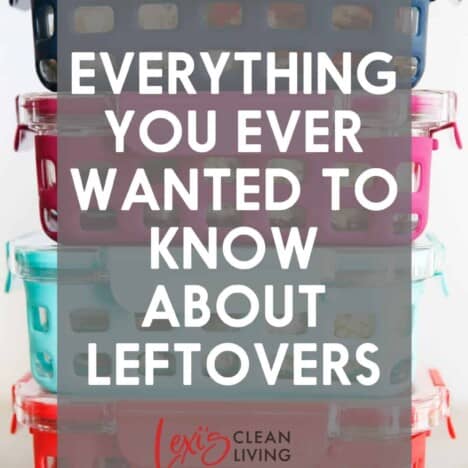
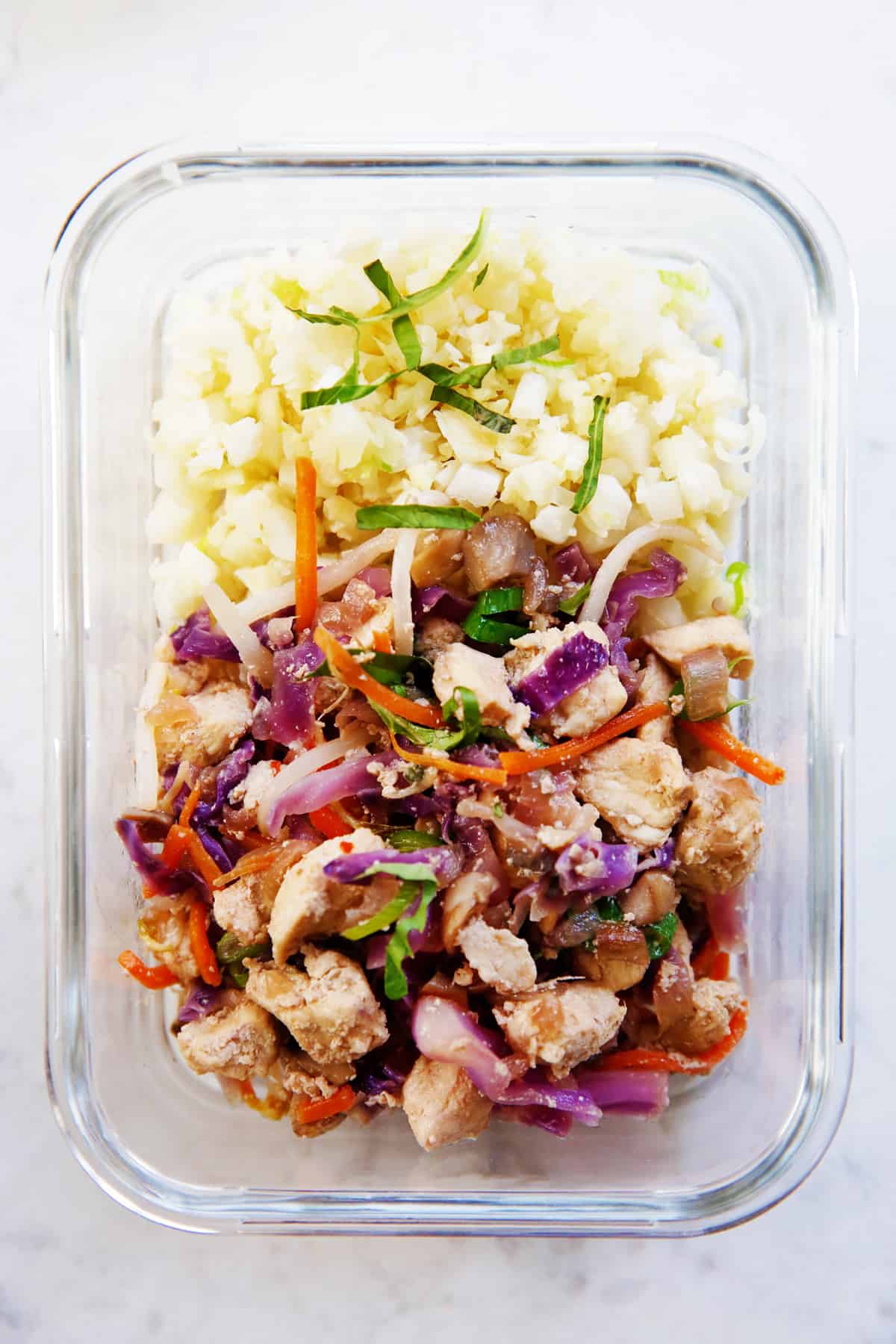

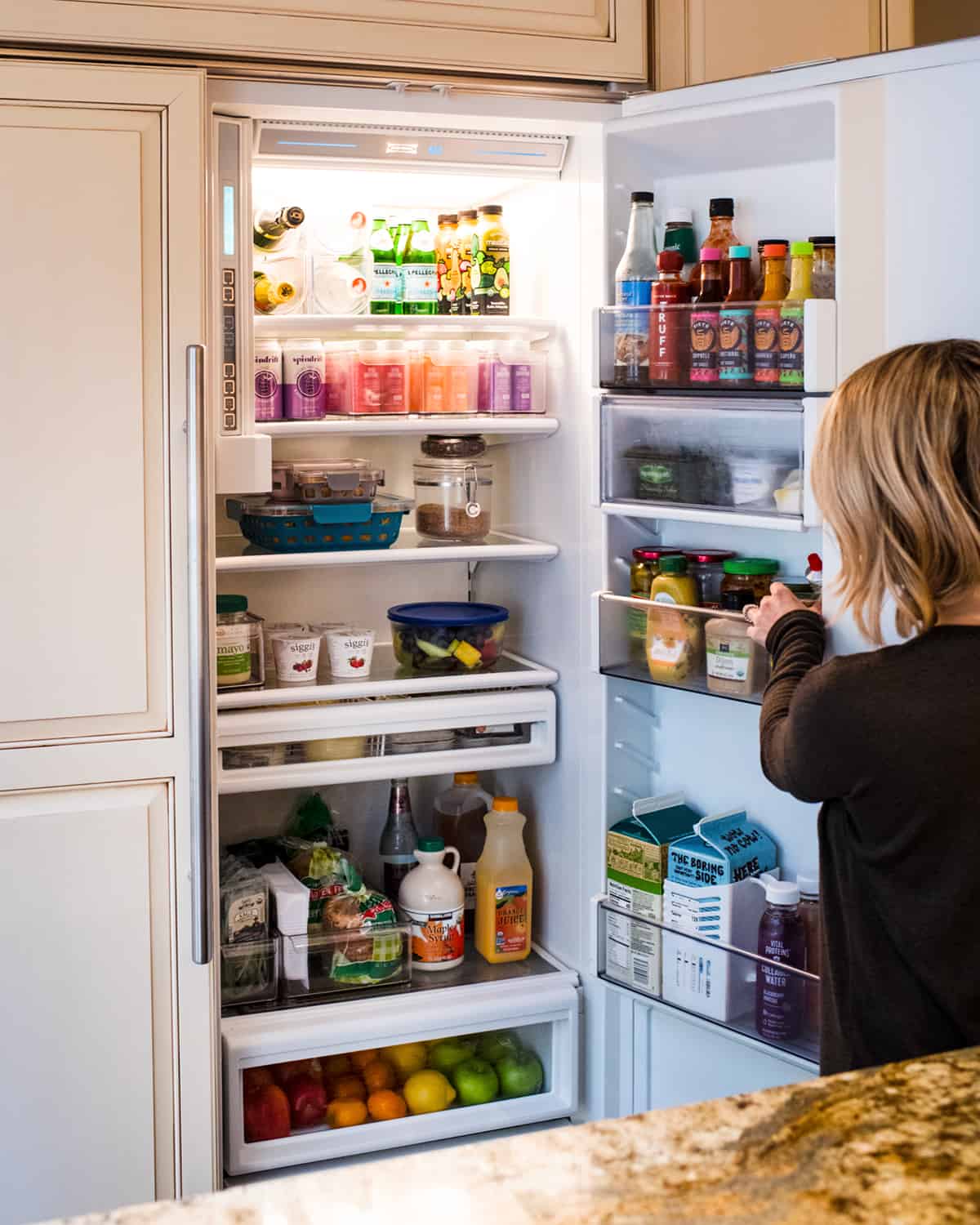 Leftover Storage Containers
Leftover Storage Containers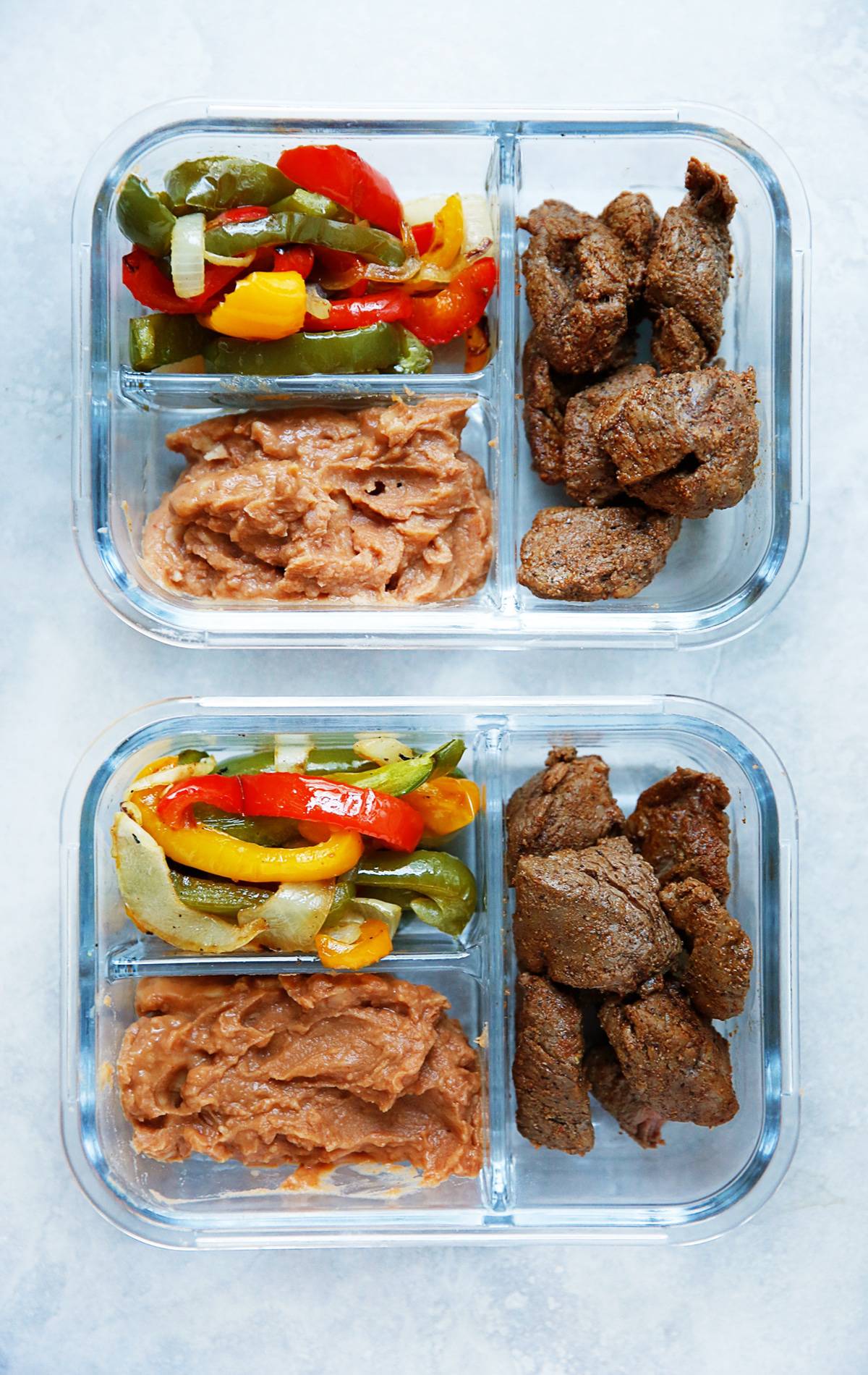 Tips + Tricks for Reheating Leftovers
Tips + Tricks for Reheating Leftovers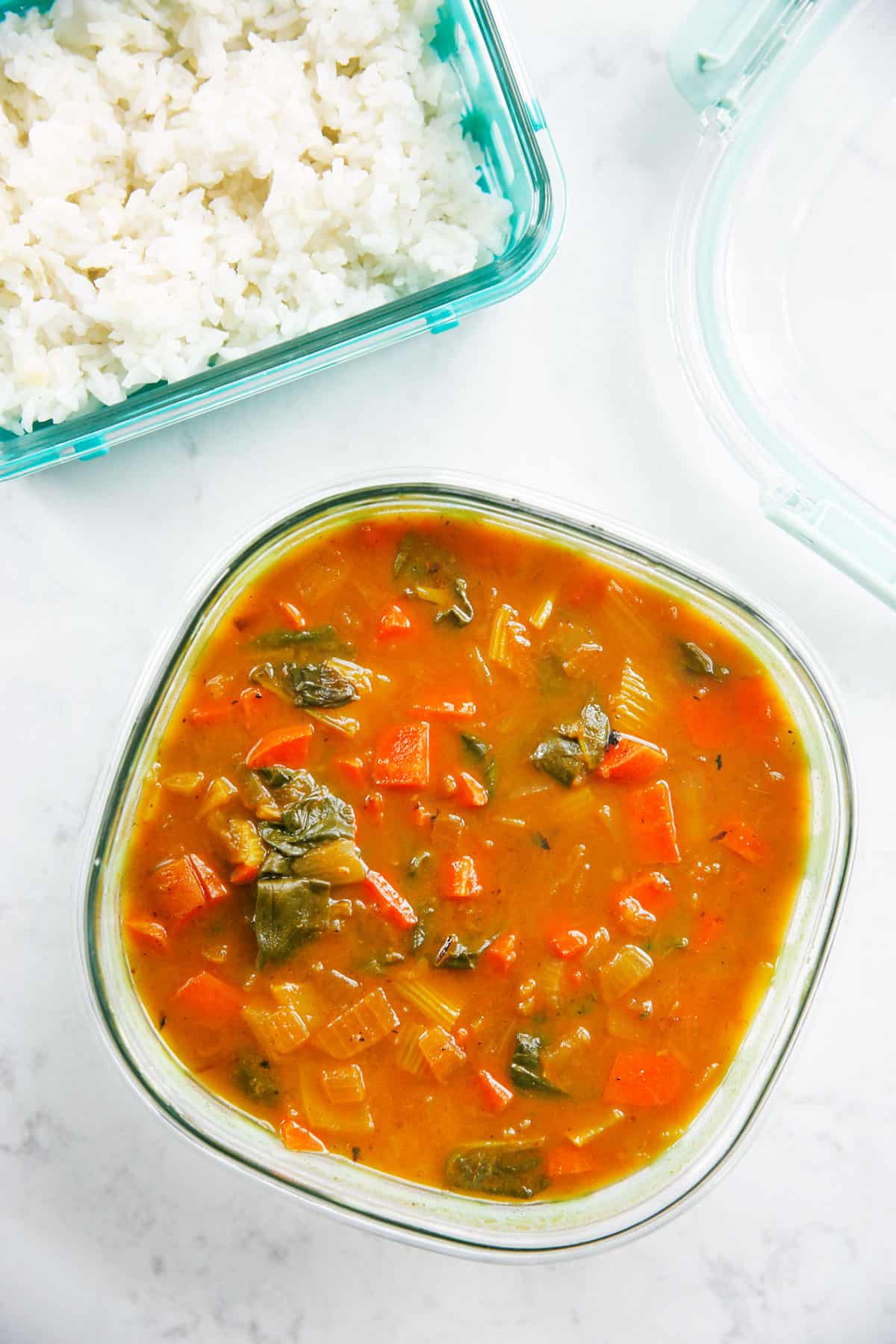
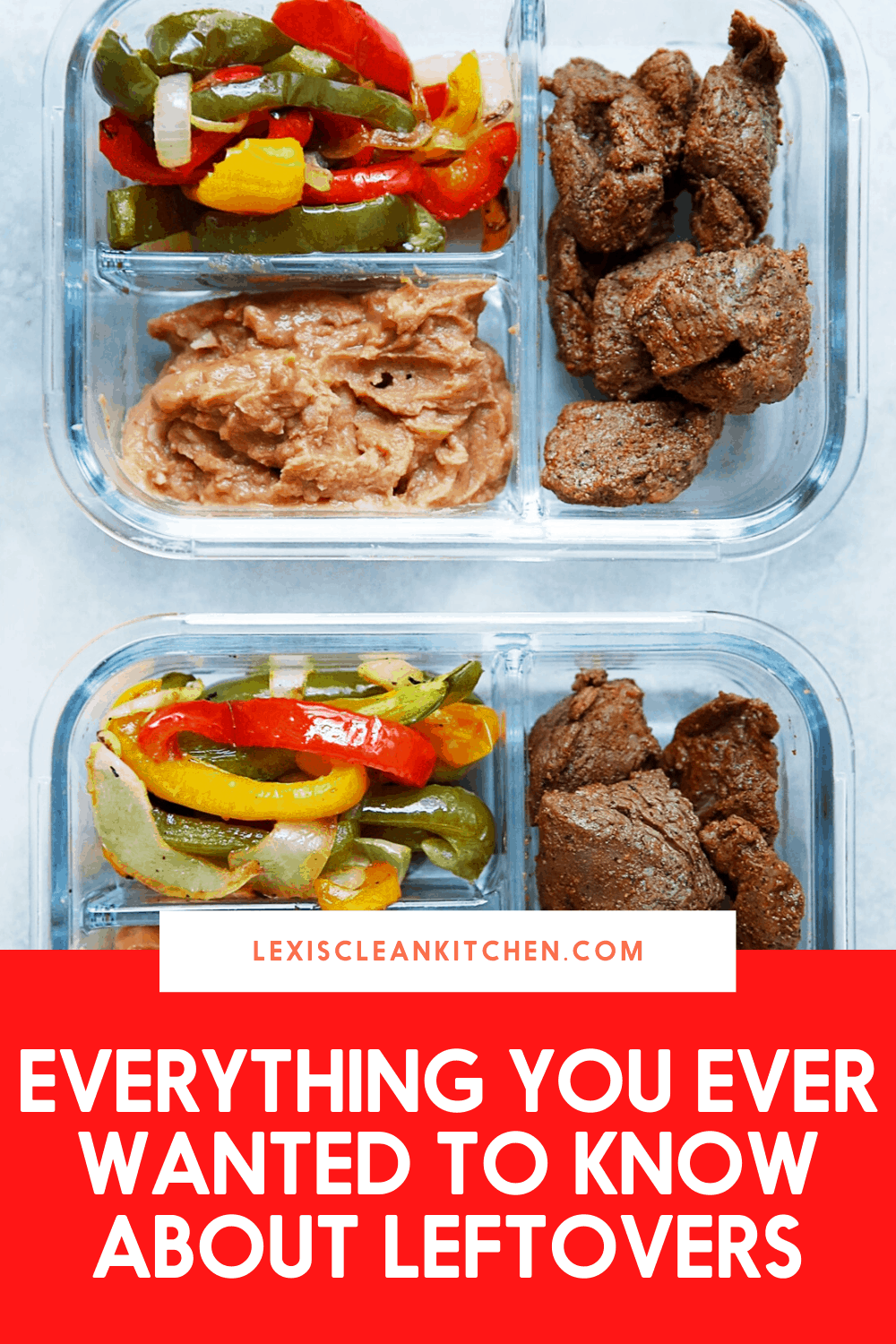

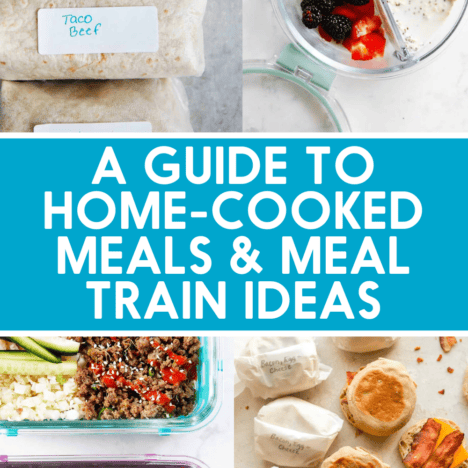

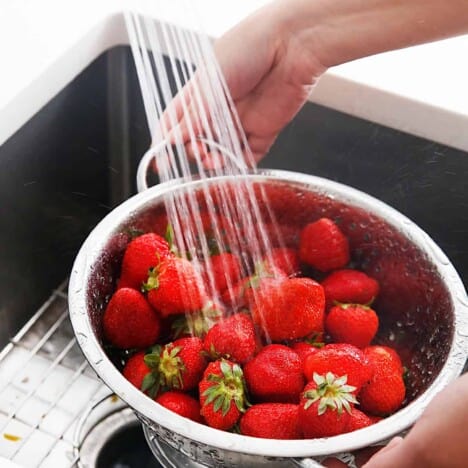
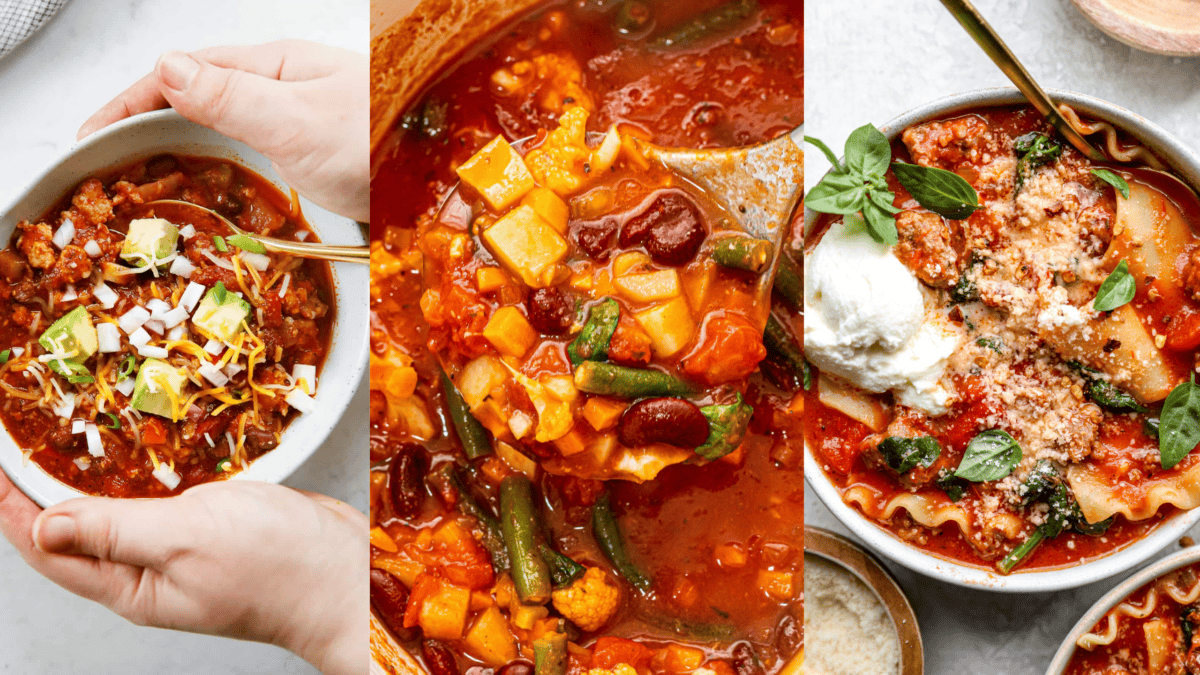
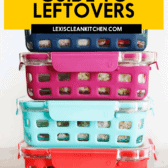
Such a useful post! Thank you Lexi!
YAY! Glad you love it.